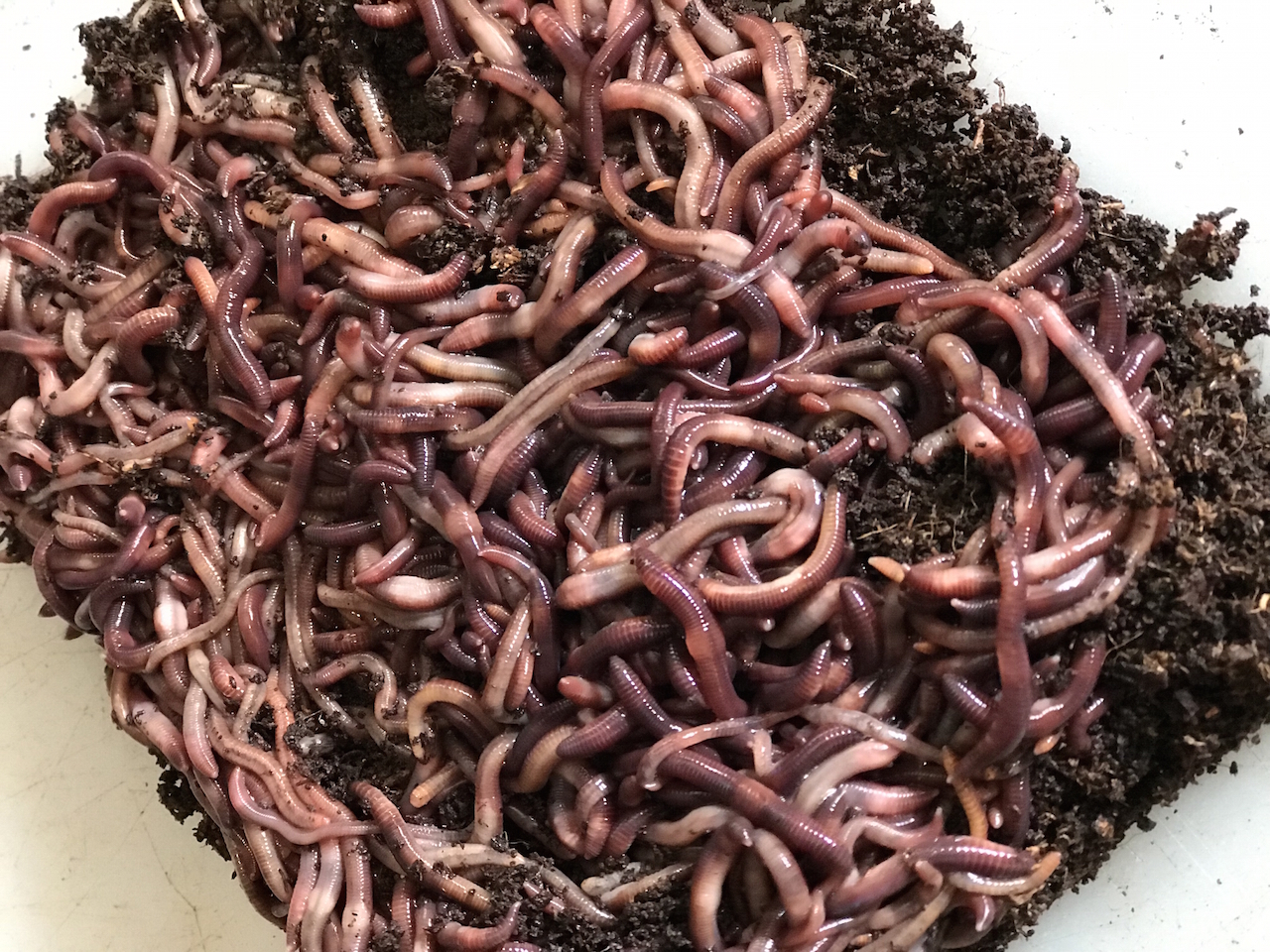Organic Composting with Red Wiggler Worms - Increase Your Yard's Growth
Organic Composting with Red Wiggler Worms - Increase Your Yard's Growth
Blog Article
Making Best Use Of the Conveniences of Red Wiggler Worms: A Comprehensive Manual for Home Gardeners and Urban Farmers
In the realm of lasting horticulture techniques, red wiggler worms stand as unrecognized heroes, quietly changing natural waste right into nutrient-rich spreadings that can function wonders for dirt wellness. By discovering the details of exactly how to properly care for and make the most of the advantages of red wiggler worms, individuals can open a wide range of chances for boosting the sustainability and performance of their horticulture undertakings.
Recognizing Red Wiggler Worms
Red Wiggler worms, renowned for their effective composting capacities, are a species of earthworms widely utilized in vermiculture techniques. These worms, scientifically understood as Eisenia fetida, prosper in rotting organic material, making them perfect candidates for composting.
One secret quality of Red Wiggler worms is their reproductive price. These hermaphroditic creatures possess both male and women reproductive body organs, allowing them to reproduce swiftly under beneficial problems. A fully grown Red Wiggler can produce multiple children in a brief period, making sure a consistent population within a composting system.

Establishing Up a Worm Container
When developing a worm bin for vermiculture functions, appropriate preparation and interest to information are necessary for creating a helpful setting for Red Wiggler worms,. Begin by selecting an appropriate container for your worm container. This can be a plastic or wooden container with a lid to maintain wetness degrees and shield the worms from light. Ensure that the bin has water drainage openings near the bottom to prevent waterlogging.

Location the worm bin in a cool, dark area away from direct sunlight and extreme temperature levels. By adhering to these steps, you can set up a growing worm bin that will successfully process natural waste into nutrient-rich vermicompost for your yard.
Feeding and Preserving Worms
Guaranteeing a nutritious and balanced diet is important for the health and efficiency of Red Wiggler worms in a vermiculture system. It is crucial to stay clear of feeding next them citrus fruits, onions, garlic, dairy items, meat, and oily foods as these can be harmful to the worms or create unpleasant smells in the bin.
Appropriate dampness levels are likewise essential for the health of Red Wiggler worms. By diligently checking their diet plan, moisture, and ecological conditions, home garden enthusiasts and city farmers can sustain a productive and healthy Red Wiggler worm populace for composting objectives.
Collecting Worm Spreadings
To successfully draw out nutrient-rich worm castings from the vermicompost, a methodical harvesting process is crucial for making the most of the composting advantages. The initial step in gathering worm castings is to encourage the worms to move to one side of the bin.
After the castings have been collected, it is essential to divide any continuing to be worms from the spreadings to avoid damaging them throughout storage or application. One effective method is to produce conical piles of spreadings under intense light. Worms will intuitively move away from the light, permitting for simple separation and removal.
Lastly, the harvested worm spreadings should be kept in a cool, dark, and dry location to maintain their quality and get more effectiveness as a nutrient-rich dirt amendment. By following these actions, home gardeners and metropolitan farmers can optimize the advantages of red wiggler worms in their vermicomposting systems.
Using Worm Castings in Horticulture
The consolidation of nutrient-rich worm castings right into yard dirt can substantially improve plant development and general dirt wellness. Worm spreadings, also understood as vermicast, are a natural fertilizer generated by red wiggler worms as they damage down raw material. These castings are abundant in vital nutrients like nitrogen, phosphorus, potassium, and advantageous microorganisms that advertise plant development and improve soil structure.
When using worm spreadings in horticulture, it is vital to mix them thoroughly into the dirt or utilize them as a leading dressing around plants. The slow-release nature of worm castings makes sure a constant supply of nutrients to plants with time, reducing the risk of nutrient leaching and promoting long-lasting dirt fertility. Additionally, worm castings assist enhance soil aeration, water retention, and microbial task, developing a healthy and balanced atmosphere for plant roots to grow.

Verdict
In conclusion, the utilization of red wiggler worms in home gardening and urban farming can dramatically profit dirt health and wellness and plant growth. By comprehending exactly how to set up and preserve a worm container, feed the worms appropriately, and gather their nutrient-rich castings, gardeners can optimize the benefits of these earthworms.
In the world of sustainable horticulture practices, red wiggler worms stand as unhonored heroes, silently transforming organic waste right into nutrient-rich spreadings that can function marvels for soil health and wellness.When establishing a worm bin for vermiculture purposes, correct preparation and interest to information are crucial for creating a helpful atmosphere for Red Wiggler worms. The first step my blog in collecting worm spreadings is to encourage the worms to migrate to one side of the container. Worm castings, additionally understood as vermicast, are an all-natural plant food created by red wiggler worms as they damage down natural issue. By understanding just how to establish up and maintain a worm container, feed the worms properly, and harvest their nutrient-rich castings, garden enthusiasts can maximize the advantages of these earthworms.
Report this page